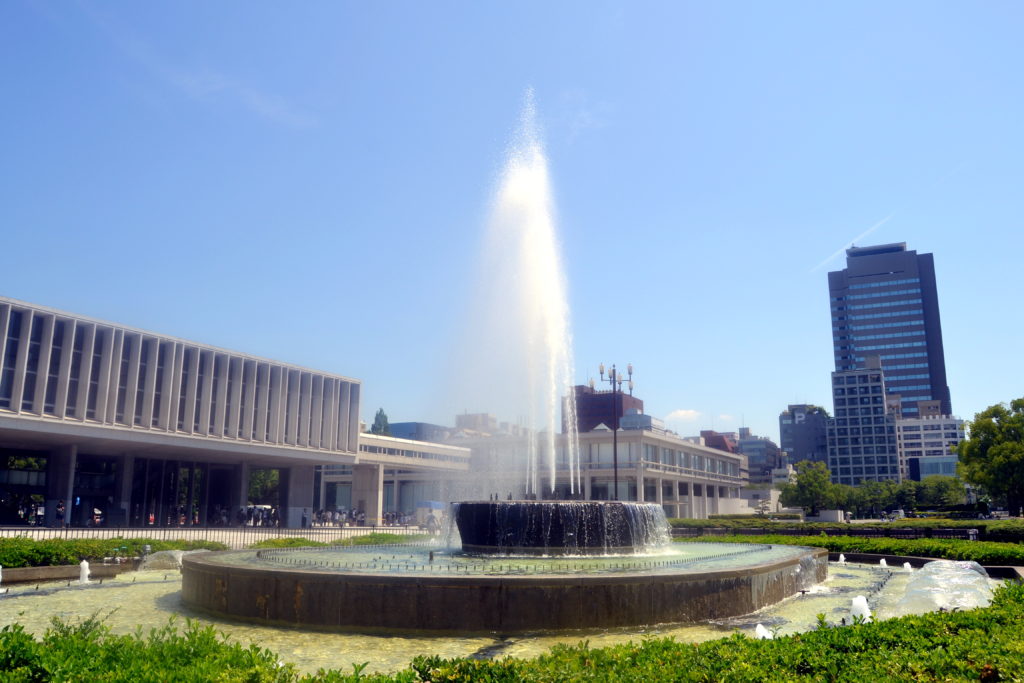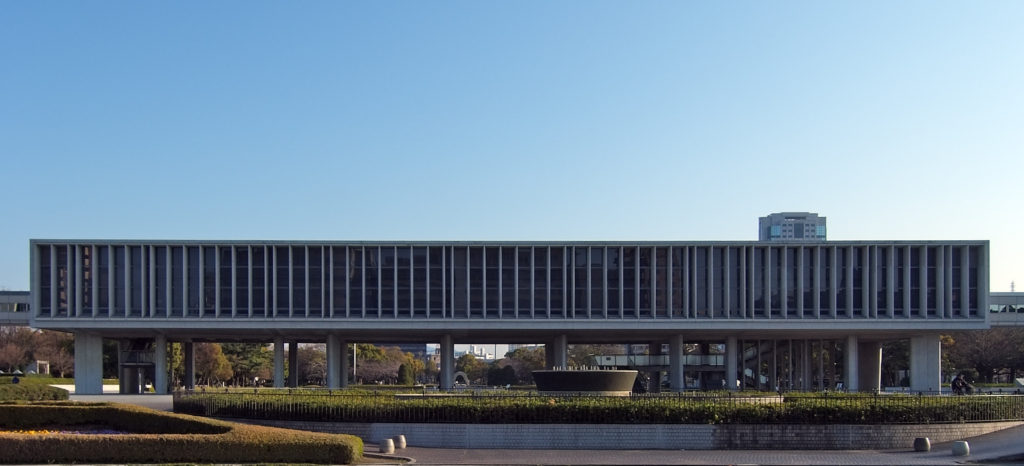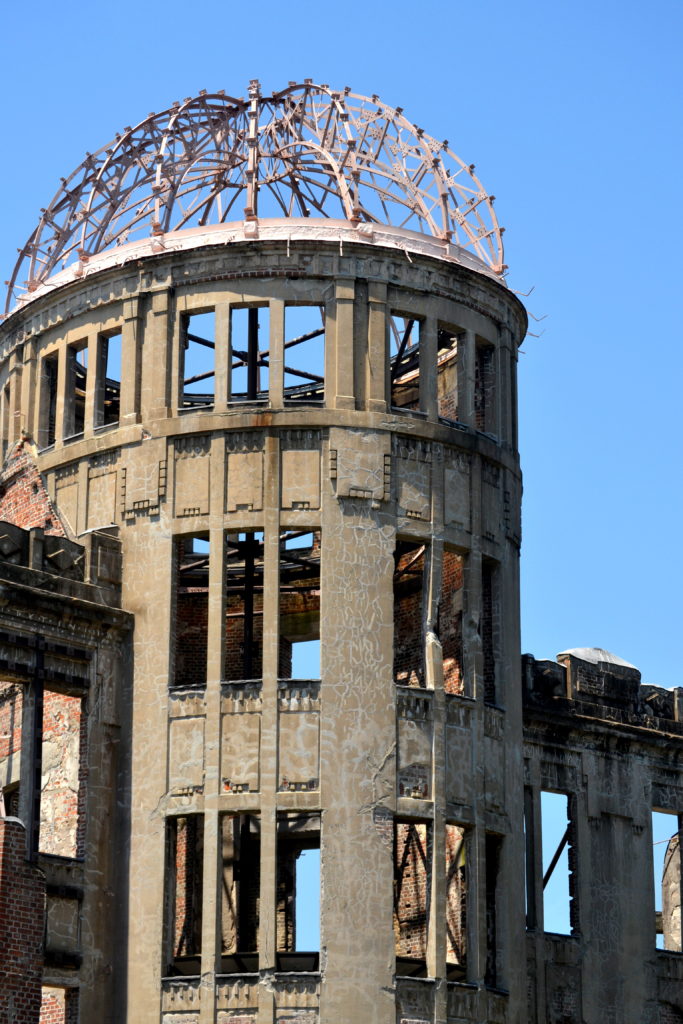In light of the United Nations’ September 21st International Day of Peace, we’re looking at architecture history in Hiroshima’s Peace Center and Memorial Park.
Following the devastation of the 1945 atomic bombing of Hiroshima, Japan sought to rebuild the city and dedicate it as a national cry for peace after a long and tumultuous war. Kenzo Tange—a premier Japanese architect—was asked to lead the city’s reconstruction efforts.

Historic Opportunity
Kenzo Tange faced a unique architectural opportunity: the chance to redesign a city without the constriction of preexisting structures. His historic design centered around a memorial dedicated both to the victims of the bombing and as a symbol of peace and future hope to the world.
Completed in 1955, Hiroshima’s central memorial is comprised of a large peace park at the hypocenter of the blast zone and features a memorial museum, a children’s peace monument, and the Genbaku Dome.
The Hiroshima Peace Memorial Center stands above the ground on large pillars, and is accessible by a free-standing staircase that allows visitors to climb up into the museum. The Peace Center is one of the few remaining examples of modern-style Japanese architecture from the 1950s. Most contemporary buildings have since been demolished.

The Peace Center’s modular design crafted with bare, reinforced concrete allows visitors to focus fully on the exhibits contained within the structure. The historic design also provides stark contrast to the shocks of vermillion, bountiful greenery, and artfully curved roofs that are so prevalent in traditional Japanese architecture. For Hiroshima, this intentionally modern piece of architecture history embodies the city’s desire for rebirth and longing for future peace.
The Hiroshima Peace Memorial’s windows look out across the rest of the park and frame a view of the Genbaku (“atomic bomb”) Dome, the eternal flame, and the Children’s Peace Monument.
Genbaku Dome
The Genbaku Dome stands in contrast to the Peace Center and represents a rare picture of ruin within a country that constantly seeks to project the most polished and beautiful image possible. Originally a landmark exhibition hall designed by Czech architect Jan Letzel, the Dome is a raw glimpse into early twentieth century Western architecture in Japan. It’s also the only surviving building that was directly impacted by the atomic blast. The building is now permanently preserved as a UNESCO World Heritage Site.

From the Genbaku Dome’s raw destruction to the Peace Center’s bare hope for the future, Kenzo Tange’s Hiroshima Peace Park walks visitors through history with architectural excellence. His historic design, a work that evolved over the course of the project, incorporates elements of imperialism, destruction, and modern hope to tell a story he hoped visitors would not soon forget.
Architecture history and designs like Kenzo Tange’s Hiroshima Peace Memorial inspire us to create homes that tell stories and stand the test of time.